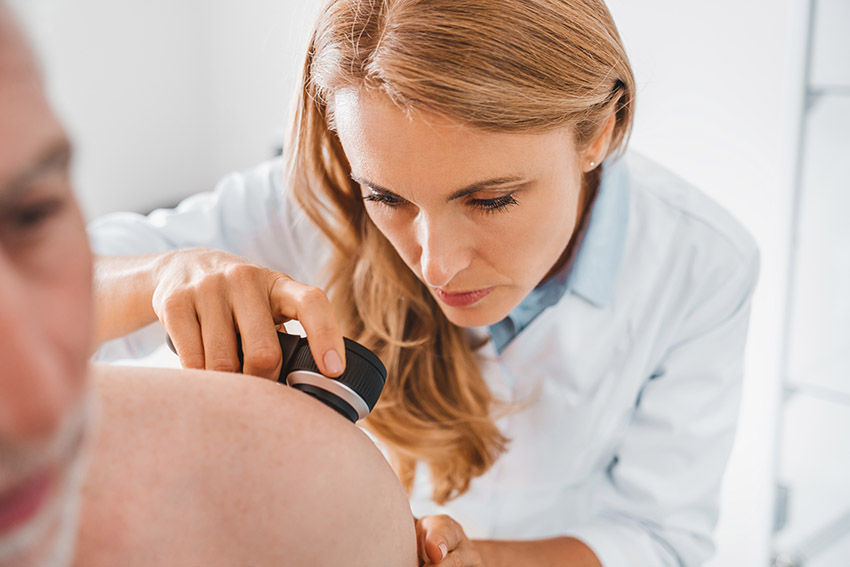
Cancer of the skin, like other cancers, is a disease of cells. Cells are tiny structures that comprise all body parts like skin, bones, heart, etc. Cells differ in shape and function of various organs but can reproduce by dividing. Average growth occurs in an orderly manner; however, when cell division is not orderly and controlled, it leads to abnormal development. Masses of tissue build up known as tumors that may be benign or malignant. Other ways in which cancer can spread in the body are through the blood and lymph systems. It may have different appearances, starting as small, pale lumps and later bleeding. It can be tiny and become large. It appears mainly on the sun-exposed areas like the head, neck, arms, hands, etc., and is painless. Sometimes, a precancerous condition called actinic keratosis may develop in sun-exposed areas. It may be in the form of red, rough patches on the sun-exposed areas of the body. However, actinic keratosis may not necessarily always turn into skin cancer. Millions of people are affected by skin cancer yearly, and around 9500 people are affected daily. Moreover, at least one in five Americans will develop skin cancer at 70.
Different Types of Skin Cancer
The different types of skin cancer are named after the type of skin cell they start from. There are three main types of cancer.
- Basal cell carcinoma (BCC)
Basal cell carcinoma is the most common form of cancer. BCC slowly grows; if diagnosed and treated early, it only causes minimal damage. It is a type of cell within the skin that produces new skin cells as old ones die off. It appears as a bump on the skin, though it can take other forms. A lump can be itchy and painful and appear shinier than the skin around it. It can also form ulcers with fluid or blood and mostly appear on eyelids, nose, face, scalp, legs, arms, and ears.
- Squamous cell carcinoma of the skin (SCC)
It is the second most common and starts on the squamous cells in the outer layer of the skin called the epidermis. Sun-exposed areas are most affected significantly in the areas of the body where you have mucous membranes, like the mouth, lungs, and anus. It can be cutaneous, which affects the top layer, or metastatic, which spreads to other body parts beyond the skin. It can happen anywhere on your body, including inside your mouth, the bottoms of your feet, and your genitals. It looks like scaly red patches, wart-like skin, raised growths, etc.
- Melanoma
It is less common but more likely to spread and grow rapidly. Moreover, it can become life-threatening in six weeks and pose a high risk of spreading to other body parts. It can occur anywhere, even if the skin has not been exposed to the sun. There is an increased risk among people under 40, especially women. Knowing the warning signs can help detect and treat cancer before it spreads— a change in an existing mole or the development of a new pigmented or unusual-looking growth.
Precautions
May is all about skin cancer awareness month! It is good to always check your skin from head to toe to notice anything unusual or any changes. If you find any lumps, bumps, nodules, scaly red patches, or any other signs or symptoms, it is best to reach out to a healthcare practitioner. Besides, staying away from the sun is the most important tip for anyone.
- Avoid the sun during the middle of the day – It is better to avoid any outdoor activities when the sun’s rays are strongest.
- Use sunscreen – When stepping outside, always apply sunscreen irrespective of the weather conditions.
- Protective clothing – Wear tight full, sleeve clothing that covers your arms and legs, including a hat and sunglasses.
- Medications – Be mindful of drugs that can make your skin more sensitive to sunlight.
